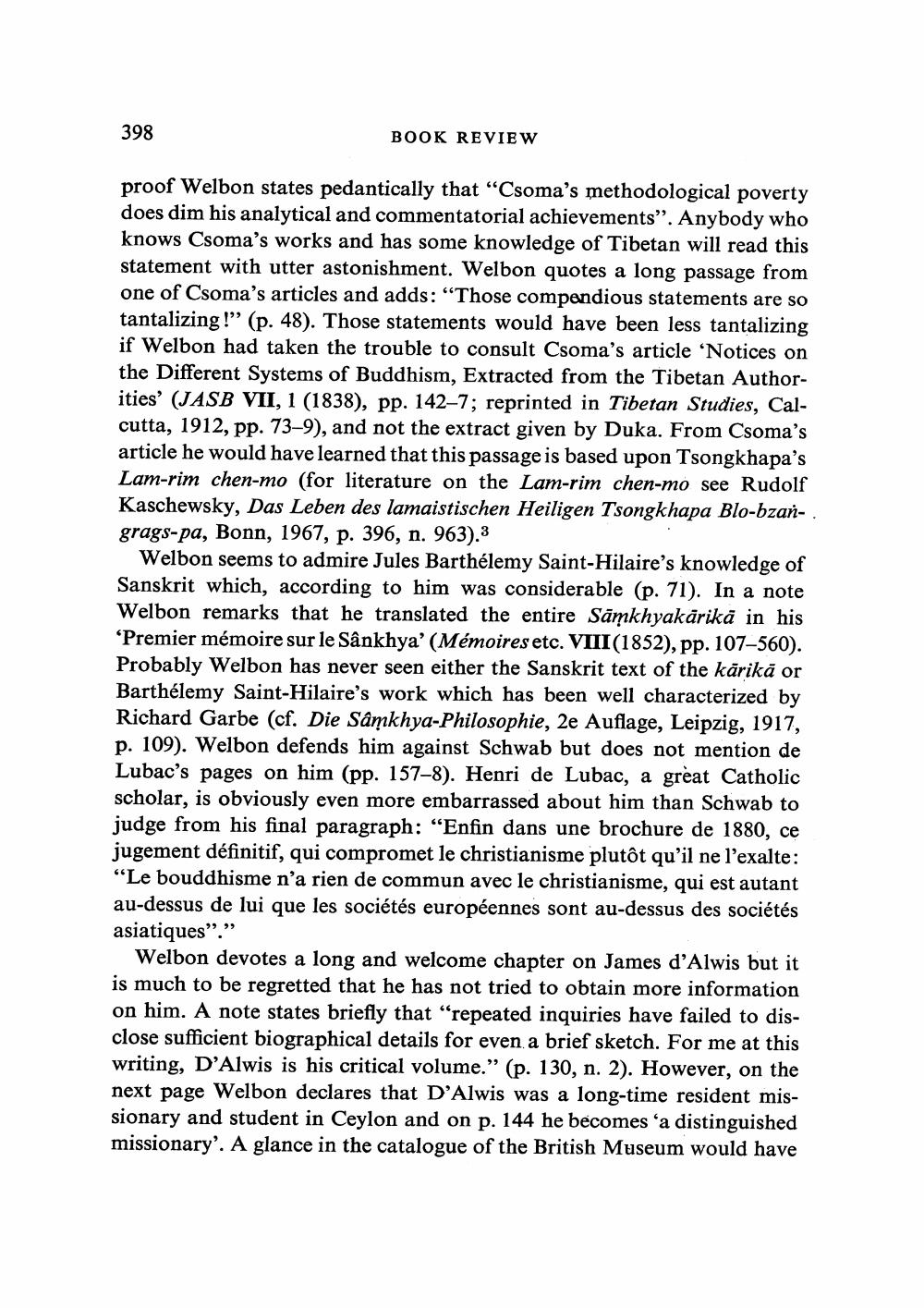Book Title: Book Review Of Buddhist Nirvana And Its Western Interpreters Author(s): Publisher: View full book textPage 3
________________ 398 BOOK REVIEW proof Welbon states pedantically that "Csoma's methodological poverty does dim his analytical and commentatorial achievements". Anybody who knows Csoma's works and has some knowledge of Tibetan will read this statement with utter astonishment. Welbon quotes a long passage from one of Csoma's articles and adds: "Those compendious statements are so tantalizing!" (p. 48). Those statements would have been less tantalizing if Welbon had taken the trouble to consult Csoma's article 'Notices on the Different Systems of Buddhism, Extracted from the Tibetan Authorities' (JASB VII, 1 (1838), pp. 142-7; reprinted in Tibetan Studies, Calcutta, 1912, pp. 73-9), and not the extract given by Duka. From Csoma's article he would have learned that this passage is based upon Tsongkhapa's Lam-rim chen-mo (for literature on the Lam-rim chen-mo see Rudolf Kaschewsky, Das Leben des lamaistischen Heiligen Tsongkhapa Blo-bzan- . grags-pa, Bonn, 1967, p. 396, n. 963).3 Welbon seems to admire Jules Barthelemy Saint-Hilaire's knowledge of Sanskrit which, according to him was considerable (p. 71). In a note Welbon remarks that he translated the entire Samkhyakarika in his 'Premier memoire sur le Sankhya' (Memoires etc. VIII(1852), pp. 107-560). Probably Welbon has never seen either the Sanskrit text of the karika or Barthelemy Saint-Hilaire's work which has been well characterized by Richard Garbe (cf. Die Samkhya-Philosophie, 2e Auflage, Leipzig, 1917, p. 109). Welbon defends him against Schwab but does not mention de Lubac's pages on him (pp. 157-8). Henri de Lubac, a great Catholic scholar, is obviously even more embarrassed about him than Schwab to judge from his final paragraph: "Enfin dans une brochure de 1880, ce jugement definitif, qui compromet le christianisme plutot qu'il ne l'exalte: "Le bouddhisme n'a rien de commun avec le christianisme, qui est autant au-dessus de lui que les societes europeennes sont au-dessus des societes asiatiques"." Welbon devotes a long and welcome chapter on James d'Alwis but it is much to be regretted that he has not tried to obtain more information on him. A note states briefly that "repeated inquiries have failed to disclose sufficient biographical details for even a brief sketch. For me at this writing, D'Alwis is his critical volume." (p. 130, n. 2). However, on the next page Welbon declares that D'Alwis was a long-time resident missionary and student in Ceylon and on p. 144 he becomes 'a distinguished missionary'. A glance in the catalogue of the British Museum would havePage Navigation
1 2 3 4 5 6 7 8
